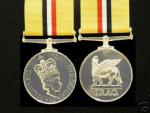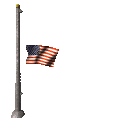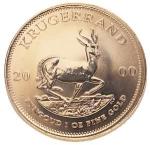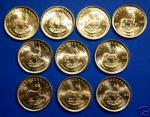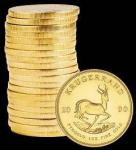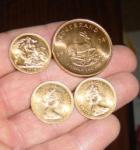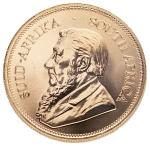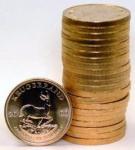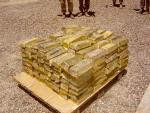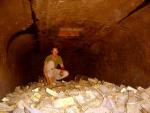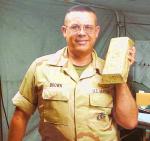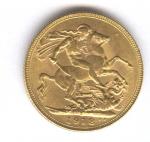-
Posts
3,575 -
Joined
-
Last visited
-
Days Won
27
Content Type
Profiles
Forums
Blogs
Gallery
Events
Store
Everything posted by bigjarofwasps
-
On the contrary Kev, thats really interesting thanks for posting it on the thread Thanks for sharing it with us, can anyone tell us any more about it?
-

Op Telic Casualties & Fatalities
bigjarofwasps replied to bigjarofwasps's topic in Modern Campaigns and Conflicts
Romanian Military Police Corporal on duty was killed with 3 Italian comrades by a bomb in a car driven into his convoy, I attach details from a Romanian Online Newspaper: "One Romanian, three Italian soldiers killed in Iraq". The soldiers were killed during a patrol mission near An Nassyria yesterday morning. The Romanian and Italian authorities, the Pope expressed deep regrets and condemned the terrorist attack. published in issue 3668 page 1 at 2006-04-28. Corporal Bogdan Hancu (28, photo) from Iasi, from a family of professional soldiers, was in Iraq with the Military Police Detachment deployed to Camp Mittica. The armoured vehicle in which the soldiers were patrolling was attacked by Iraqi rebels around 8:00 AM. A trap vehicle was driven straight into the patrol car killing the Romanian and three Italians. The joint Romanian-Italian convoy formed of four army vehicles was just starting a patrol mission that was eventually fatal. Onboard the vehicles there were one Italian officer, 15 Carabinieri and one Romanian – Bogdan Hancu. The military convoy was driving to the Provincial Joint Operation Centre – the integrated operative venue of the security forces serving the province – where the victims of the attack were supposed to carry out their regular service of ground control in coordination with the local security forces. The attack is being investigated by an Italian-Romanian commission. Romanian soldier repatriated last night. The body of the Romanian soldier was expected to be flown to Bucharest last evening. Bogdan Hancu will be entombed with military honours most likely on Saturday. The Mayor of Iasi has announced that the municipality would assist the family with money and with a grave. Condolences President Traian Basescu voiced his deep regret for the loss suffered by the family of Corporal Bogdan Hancu. “Through the courage to be a member of the Romanian troops that maintain peace in the hot areas of the world, Corporal Bogdan Hancu ranges among the Romanian heroes who put their lives at risk day after day, taking action there where terrorism represents a daily reality,” said the President, quoted by a press release of the Presidential Administration. Premier Calin Popescu Tariceanu and the Government in their turned deplored the terrorist attack. “Premier Calin Popescu Tariceanu and the Executive express their deepest condolences and their solidarity with the family of the dead Romanian military,” reads a news release issued by the Government. The Minister of Foreign Affairs extended “his sincerest condolences and solidarity to the family of the Romanian soldier”. The Social Democratic Party (PSD) also expressed regret over the loss of the Romanian soldier and conveyed condolences to his family. American and British Ambassadors Nicholas F. Taubman and Quinton Quayle also expressed their regret for the victims of the attack, and conveyed condolences to the Romanian soldier’s family. The American diplomat expresses in a news release his gratefulness that “America has such a brave and trustworthy ally as Romania in the war on terror.” In turn, Quinton Quayle stated that he was impressed with the courage and determination proven by the Romanian troops stationed in Iraq. The President of Italy, Carlo Azeglio Ciampi and current PM Silvio Berlusconi expressed their consternation and immense grief. Ciampi called upon the competent authorities to keep him informed of any developments and on the details of the attack. Recently elected Head of the Italian Government Romano Prodi in his turn pointed out that “the tragedy is affecting the entire Italy.” Bogdan Hancu, promoted post-mortem The Ministry of National Defence leadership expresses its regret for the death of Caporal Bogdan Hancu and stands by the mourning family, reads a communiqu?. Through the order of the National Defence Minister, the caporal was promoted to the rank of Junior Lieutenant post-mortem. The Ministry will take all the necessary measures to support Bogdan Hancu’s family during such hard moments. The Ministry of National Defence also expresses its regret for the human losses suffered by the Italian partners. Corporal Bogdan Hancu is the second Romanian soldier to have died in Iraq, but the first one to die on a mission. On March 25, 2006, soldier Lili Dobre (engaged under a contract) from Battalion 280 Focsani, shot himself. Romania has deployed to the An Nassyria region a battalion of infantry - Battalion 280 Focsani – and a military police detachment. They are all accommodated at the Camp Mittica base under Italian command. Italy will pull out from Iraq until the end of this year. The decision has been made by Italian Premier Silvio Berlusconi under the pressure of the public. Romania has not made any plans or decision about such an eventuality so far, President Basescu having repeatedly stated that the Romanian troops would stay in Iraq as long as it is deemed necessary. Confusion The family of the soldier was announced by the representatives of the Defence Ministry soon after the attack. According to the Press Bureau of the Ministry, the person who was announced was the Corporal’s father, Marcel Hancu. Subsequently, the media announced this name. But, a news report signed Mediafax reads the opposite, namely that the family of the soldier had learned about his death from the press. ”We realised what happened when we saw the media at our door. It was around 11 O’clock, and nobody from the unit had called to tell us. When my wife learnt the news she fainted. We knew the risks of the profession of our soldier, but we had never thought that such a thing could happen to Bogdan,” has allegedly said the father of the killed soldier to Mediafax correspondent. The Ministry denied this information, stressing that probably the mother of the Corporal had not been announced about the death of her son before learning it from the media, but the father had been announced before the information was transmitted to the press. Corporal Bogdan Hancu comes from a family with military tradition. Both parents, Marcel and Carmen Hancu, had been officers, switched in reserve with the rank of colonel, and Lt. Colonel. “We have not encouraged him to follow a military career. It was his decision. He had the rank of corporal and he wanted to be upgraded. A mission abroad would have facilitated his promotion. He left to Iraq in January, and had to return in July,” said Carmen Hancu. Bogdan Hancu had married Ionela, an accountant, last November, and they planned to have a baby after his return from the mission. The two were living together with Bogdan’s grandmother, in a flat obtained subject to a real estate loan. Hancu family wants to bury Bogdan in the cemetery “Sfintii Petru si Pavel” from Iasi, in the lot reserved for the soldiers fallen in the line of duty. Pope condemns Iraq attack VATICAN CITY - Pope Benedict XVI on Thursday expressed “profound grief” over the bomb attack in Iraq which killed three Italians and one Romanian soldier. In a letter of condolence to Italian Foreign Minister Gianfranco Fini, the pope paid tribute to the Italian contingent’s “generous and unselfish contribution” to peace and freedom in Iraq. The letter was signed by the Vatican “foreign minister” Monsignor Giovanni Lajolo who said earlier, in an interview with Vatican Radio, that that the Iraq attack and the recent bombings in Dabab, Egypt, were “acts of cruel barbarity”. by Rodica Pricop. -

FIRST ROMANIAN SOLDIER KILLED IN IRAQ 27 APRIL
bigjarofwasps replied to Kev in Deva's topic in Modern Campaigns and Conflicts
It is with deep regret and shame, that I must admit I have only just noticed this thread. If no one objects, I`d like to add him to the Op Telic roll of honour list of names. -

Medals for service in Iraq
bigjarofwasps replied to mariner's topic in Modern Campaigns and Conflicts
I think you`ll be OK buying on Ebay, a lot of the medals for sale, are coming from the orignal soldiers themselves so you might get some photos or paperwork if not a bit of service history with them, if you ask. If I know a British soldier, extra beer money talks!!!!!!! -

Medals for service in Iraq
bigjarofwasps replied to mariner's topic in Modern Campaigns and Conflicts
I think 1 is refered to as the liberation? As for 2-4 being the occupation I don`t think thats the correct term either, but as for what it should be refered to, I`m open to suggestions? As what about 5+? -

Medals for service in Iraq
bigjarofwasps replied to mariner's topic in Modern Campaigns and Conflicts
-

Roll of Honour Afganistan
bigjarofwasps replied to bigjarofwasps's topic in Modern Campaigns and Conflicts
Herr General, thank you for this post. I think I speak on behalf of all nations when I say, any soldier killed in the line of duty whilst on an operation tour, merits rememberance with the rest of the fallen, as if they hadn`t been deployed on active service in an active roll they wouldn`t have been there to pay the ultimate price in the first place.......We will remeber them all!!!!!!!!!! Are there any pictures of them? -

Medals for service in Iraq
bigjarofwasps replied to mariner's topic in Modern Campaigns and Conflicts
-

Roll of Honour Afganistan
bigjarofwasps replied to bigjarofwasps's topic in Modern Campaigns and Conflicts
Afghan clashes 'leave five dead' At least four foreign soldiers and an Afghan soldier have been killed in two separate incidents in Afghanistan. Three soldiers with US-led forces died in clashes in the volatile eastern region of Kunar, a spokesman said. A Nato soldier and an Afghan soldier were killed in a gun battle with Taleban fighters in southern Uruzgan province, an official said. Militants have recently stepped up their insurgency against government and foreign forces in the south and east. Insurgents attacked a joint Nato-Afghan army convoy in southern Afghanistan, according to a force spokesman. Three other Nato soldiers were wounded in the attack, officials said. The identities of the victims had not yet been released. It was also not clear if there were casualties among the Taleban combatants. The BBC Roland Buerk, in Kabul, says Afghanistan is going through its bloodiest period of violence since the fall of the Taleban in 2001 and Kunar province has seen much of the fighting. In recent weeks coalition troops have been pushing northwards into the remote mountains but the Taleban and their al-Qaeda allies have been hitting back. On Thursday a coalition soldier was killed and another wounded in an ambush. The US led coalition has been hampered by the rugged terrain and the ability of the insurgents to slip across Kunar's border with Pakistan into the tribal areas of the northwest frontier province to regroup, our correspondent says. -
South Africa's gold industry has been the principal focus of black economic empowerment, resulting in a changing ownership structure. Leading the empowerment movement in recent years has been Harmony Gold Mining Company which has merged with ARMgold which is owned by African Rainbow Minerals. South Africa is the world’s largest gold producer, marking the lowest production level since 1956. In 2003 gold production fell by an estimated 6.5% to 373,074 kg, however gold still accounted for an estimated 37% of dollar export revenue within the country. 95% of South Africa’s gold mines are underground operations, reaching depths of over 3.8 km. Coupled with declining grades, increased depth of mining and a slide in the gold price, costs have begun to rise and as a result production has been steadily falling. However, in order to cut costs, mines have undergone major business re structuring and have reduced costs dramatically. Unfortunately, this process involved several thousand workers being retrenched. The future of the gold industry in South Africa depends on increased productivity. South Africa as the world's largest producer of gold, is more exposed than any other country to slumps in price because its deep level mines are the highest cost producers in the world. South Africa’s gold mines have the highest production costs in the industry. Gold is the largest mineral foreign income earner in South Africa, contributing 27.4% in mineral revenues. The gold industry is also responsible for 56% of South Africa’s mine labour force. South Africa’s has enormous gold ore reserves, estimated at 40 000t, representing 40% of global reserves. South Africa’s main gold producing area is concentrated on the Archaean Witwatersrand Basin. The Witwatersrand basin, which has been mined for more than 100 years and has produced more than 41 000 t of gold, remains the greatest unmined source of gold in the world. Major new projects, new technology, new approaches to the organisation of work, better labour relations and some commercial innovations are starting to reshape this industry. Unlike most other gold deposits in the world, the Witwatersrand (“Wits”) is a gold placer deposit, with gold being hosted by conglomerates and grits. The Wits sedimentary basin is massive and stretches through an arc of approximately 400km across the Free State, North West and Gauteng Provinces. The gold bearing conglomerates or reefs are generally tabular with varying dips. Most of the Wits basin is covered by later stage sediments of the Ventersdorp and Karoo groups, with the Wits outcropping in Johannesburg, which started the Wits gold rush over a hundred years ago and resulted in formation of the city of Johannesburg. South Africa does have other smaller gold producers outside of the Wits, in the form of Archaean greenstone belts. The main gold producing greenstone belts are the Barberton Greenstone Belt and the Kraaipan greenstone belt. The Barberton greenstone belt is situated in the Mpumalanga province, just north of Swaziland. The Kraaipan belt is located west of Johannesburg, near Kuruman. Other smaller belts exist in the Northern Province, but have been worked sporadically. The South African gold mining industry in 2002 was driven by the rand's weakness against the dollar and the resulting increase in the rand price of gold, however, in 2003 the rand:dollar exchange rate had an adverse effecr on costs and revenues with many companies reporting decreases in profit. Metorex reported a headline loss of 12,18c per share for the haplf year to December 2003. ? #Major Projects The development of the South Deep Mine (owned jointly by Western Areas and Placer Dome). This mine is a southerly extension to the Western Area Gold Mine, and contains measured and indicated reserves of 78.9 million ounces of gold in 541 million tonnes grading 4.5 g/t gold. Currently a 2.4 km shaft is being sunk to intersect haulage’s developed from the Western Areas mine to the north. Avgold are currently developing the Target orebody (estimated total resource of 6.5 Moz), situated in the Free State Province. Similar to South Deep, the orebody is being accessed by haulages developed from Avgold’s Lorraine Gold Mine. AngloGold are investigating using deep level mining technology to develop the Ultra Deeps orebody, situated at 5km depth. The orebody is currently down dip from Harmony Gold's Elandsrand mine. ? #Structure Due to the numerous changes in control and mergers that have occurred in the South African Gold Industry, many of the traditional names have been rendered redundant. South Africa’s major gold producers (producing more than 1Moz annually) are AngloGold, Gold Fields, Harmony and Durban Roodepoort Deep (DRD). Numerous other gold mines exist, operated by Avgold, JCI Gold and African Rainbow Minerals. Due to the numerous changes in control and mergers that have occurred in the South African Gold Industry, many of the traditional names have been rendered redundant. Consolidation of South Africa's mining industry has become a key issue in order to maintain the industry as a leading gold producer globally. Most of South Africa's goldfields have been split up according to the current mineral rights holders, although the orebody being exploited is essentially the same. In order to extract the orebody effectively, South African producers will have to devise methods in which the "farm fences" dividing their properties can be eliminated, leading to a more economically method of mining and extraction to the benefit of all parties concerned. A similar scenario exists in Nevada, where Rio Tinto and Barrick have a similar arrangement. Currently, South Africa's gold production is dominated by Anglo Gold, Gold Fields and Harmony (and to a lesser extent DRD). Anglo Gold has already began the consolidation process through the sale of several of its older mines in the North West and Free State Provinces to Harmony Gold. Further consolidation in the Free State Goldfields continued in 2001, with AngloGold selling off its Free State assets to a Joint Venture (called Freegold) between Harmony and African Rainbow Minerals (ARM). Talks are also underway between Gold Fields and Harmony over some of Gold Fields's assets in the Free State.
-
Hi Dutchboy, nice to meet you. To be honest I`ve only just discovered the wonders of the Kruggerand, but like you say its a no nonsense lump of gold isn`t it.
-
Hi Guys, I`ve heard a rumour that Air Crews, are now issued with Kruggerands, as apposed gold sovereigns. I`ve yet to have this confirmed, and if true I`m assuming that its the quarter ounce ones, and not a full kruggerand. Will try and confirm more details and let you know. Can anyone shine any light on this further?
-
South Africa's modern history has often been dated from the first commercial mining of diamonds and gold in the 1870s and the 1880s, when the region became a magnet for European investment. Mining in the region predated European arrivals by several centuries, however, as the new government recalled in its minerals policy statements in 1994 and 1995. Iron mining and smelting sites in the northeast were used as much as 1,700 years ago; copper was mined south of the Limpopo River more than 1,000 years ago; and historians describe early mining activities in the Witwatersrand (literally, "Ridge of White Waters" in Afrikaans, commonly shortened to Rand) area, which attracted miners from elsewhere in Africa as early as the thirteenth century Soon after the European rush for gold and diamonds in the late nineteenth century, mining operations expanded to include more than two dozen other minerals. By the mid-twentieth century, South Africa was the world's largest producer or second largest producer of gold, diamonds, platinum, chromium, manganese, and vanadium; and it ranked high among producers of coal, iron ore, uranium, copper, silver, fluorspar, asbestos, and limestone. Clusters of minerals occur in five major mineral complexes--the Bushveld, Transvaal, Witwatersrand, Northern Cape, and Western Cape complexes. Whereas most mines were originally funded and managed from European centers, by the 1970s most were managed by South Africa's large diversified corporations, which controlled assets around the world. Despite its importance in export revenues, the mining industry contributes only about 9.6 percent of GDP in the mid-1990s, down from an average of nearly 15 percent during the 1980s. The mining sector had been gradually surpassed by manufacturing and financial services both in terms of national output and labor force participation. The mines still account for a greater share of export revenues than any other single economic activity in the 1990s. The mineowners' association, the South African Chamber of Mines, was formed in 1889 to represent the industry in dealings with the government. In the 1990s, the Chamber of Mines includes six major mining finance houses, with thirty-six gold mines, twenty-two coal mines, and sixteen diamond, platinum, antimony, asbestos, manganese, lead, and copper mines. Together they account for 85 percent of South Africa's mineral output. The Chamber of Mines negotiates labor concerns on behalf of mineowners, administers training programs for mineworkers, trains mineworkers in rescue and safety procedures, oversees pension and benefit funds, coordinates research programs, and refines and processes some minerals before sale. Gold, first mined by Europeans in 1886 near Johannesburg, soon became the most important sector in the mining industry. South Africa has almost one-half of the world's known gold reserves, located primarily in the Rand in what was once a prehistoric lake. Gold is also mined in the Free State. Industry analysts estimated in the early 1990s that South Africa had produced more than 43,000 tons of gold in the past century, and that at least that amount remained in reserves. Gold occurs in seams embedded in rock strata, sometimes more than a mile below the surface. Deep shafts must be sunk, large amounts of rock must be blasted and brought to the surface, and the rock must be crushed and chemically separated from the gold. Some gold mines then pump processed mine tailings underground to serve as backfill. Mining and processing are costly, especially in deposits where the gold seam is extremely thin compared with the surrounding rock. For example, in the early 1990s industry analysts estimated that only 5.6 grams of gold were extracted from each ton of ore excavated. Nevertheless, the industry has consistently earned high profits and has accounted for one-third to one-half of the world's gold production in the 1980s and 1990s. The country's fifty-seven operating gold mines produce between 600 and 620 tons of gold per year, representing almost 30 percent of the world production. Gold production in 1994 and 1995 fell below 600 tons for the first time since the 1960s. Gold mining companies traditionally kept expenses to a minimum by paying low wages. Gold mines became known for their often exploitative labor policies, including the use of migrant workers on limited contracts, strict worker control in company compounds, and difficult working conditions. Labor costs were especially important in determining profits, because the price of gold was set at US$35 per ounce through the 1960s. After the price of gold was allowed to float in 1968, it gradually rose in response to market demand, and companies could afford to produce less and still earn even greater profits. They then began to expand operations into so-called low-grade-ore mines. The volume of South African gold production fell, and gold prices skyrocketed to an all-time high of US$613 per ounce in 1980. During the 1980s, the dollar price of gold fluctuated widely, but because of devaluations of the rand, the rand price of gold generally advanced. When gold prices fell in 1989, the industry found that many of the low-grade-ore mines were no longer profitable. As the average value of the rand increased against the dollar, overall industry profits declined, and nearly half of the gold mines in operation were running at a loss. At least 40,000 gold mine workers were laid off in 1990, according to government estimates, and layoffs continued through 1993. During 1994 all major gold mining houses except Johannesburg Consolidated Investments (JCI) were reporting lower profits as output fell in response to labor unrest and other factors. Randgold closed its Durban gold mine in mid-1994, owing primarily to poor grades of available ore, and other mines were threatening to close within the next few years unless profits improved. In 1994 JCI began to "unbundle" its corporate structure by dividing into three separate companies. Anglo American, JCI's largest shareholder (with 48 percent), retained its platinum and some diamond interests in one company, Anglo American Platinum. JCI's gold mining and other industrial interests were separated into two companies, JCI Limited and Johnnies Industrial Corporation. Shares for these companies are being offered to the public, primarily as a vehicle for black investment and broadening participation in this sector of the economy.
-
Hi, I`m by n means whatsoever, an expert, and can not account for this, but I just thought, have you seen how quickly medals tarsh anyway, even if just in a draw or something. How often do you wear `em once or twice a year maybe, you polish `em up, and by the next time you come to need `em they`ve all go black? Just a thought.
-
Krugerrands: the best-selling gold bullion coins ever The low-price gold bullion coins for gold bullion buyers More gold Krugerrands have been minted than all the other gold bullion coins put together, with some 42 million Krugerrands having been minted since 1967. Most Krugerrands were minted in the 1970s and early 1980s to meet the demand as gold bullion buyers flocked to gold coins as protection against inflation. South African gold bullion Krugerrand coins were first imported into the United States immediately after Americans regained the right to buy and own gold bullion on December 31, 1974. The rush to buy gold was on, and Krugerrands became an instant hit with gold bullion buyers. Today Krugerrands remain the most successful gold bullion coins ever minted. South African Krugerrands banned However, in 1985, because the South African government was white-ruled, Congress banned the importation of Krugerrands. By then, an estimated 22 million Krugerrand gold coins had already been imported, and the ban did not affect the status of gold bullion Krugerrand coins already in the United States. Today an active market continues for "Rands," as they are often called, and thousands of Rands are traded daily. In 1994, Congress lifted the importation ban, and gold bullion Krugerrands were again offered for sale in the United States. By then, however, Gold Eagles had captured the U.S. gold bullion coin market, and the South African effort to promote Krugerrands in the U.S. ended. Today, Rands sell at prices below Gold Eagle prices and remain favorite gold coins for gold buyers seeking to buy bargain bullion gold. As do Gold Eagles, Krugerrands come in four sizes: 1-ounce, 1/2-ounce, 1/4-ounce, and 1/10-ounce. All four gold coins carry the same design. 1-oz Rands are far the most popular and generally can be found in large quantities. The fractional-ounce Rands are not always available, but when fractional-ounce Krugerrands are available they are significantly lower priced than fractional-ounce Gold Eagles. Also like Gold Eagles, Krugerrands are 22-karat gold, being alloyed with copper. (Rands were so popular that when the U.S. Mint designed its Gold Eagles, the Krugerrand dimensions and alloy were used.) Rands are legal tender coins in South Africa. Krugerrand gold bullion coins trade in the secondary market only, which means Rand buyers receive Krugerrands that have been previously owned by other investors. Most Krugerrand gold coin orders are filled with mixed dated coins. Occasionally tubes contain Rands dated the same year. Available Sizes/Options: 1-ounce 1/2- ounce 1/4-ounce 1/10-ounce
-
http://www.taxfreegold.co.uk/wesellkrugers.html http://www.taxfreegold.co.uk/krugerspellings.html http://www.taxfreegold.co.uk/krugerrandinfo.html http://en.wikipedia.org/wiki/Krugerrand
-
Kruger Fact File Everything you need to know about krugerrands. One Ounce of Gold The South African Chamber of Mines had an inspired idea to help market South African gold. It was to issue a one ounce bullion coin, to be sold at a very low premium over the intrinsic gold value. Back in 1967 Krugerrands were first minted and issued in 1967, and have been produced every year since. They have legal tender status in South Africa, which allowed them to be imported into many, but not all, countries without import taxes, duty or VAT. The Krugerrand Family Originally only one size was issued, which contained one full troy ounce (31.1035 grams) of fine gold. This was originally known as a krugerrand, or kruger, for short. From 1980, three other sizes were introduced, namely a half, quarter, and tenth ounce size. Because of these, the original krugerrand is sometimes referred to as a "full" or "one ounce" kruger or krugerrand, although within the trade, the word kruger or krugerrand is understood to be the full sized original one ounce version. British Investors Missed Out At the time of the kruger's introduction, it was not legally possible for British residents to acquire bullion gold coins, so that the krugerrand was almost unknown in Britain until 1971. Low Premium Over Gold Content According to the publicity at the time, the kruger was to be made available to world bullion dealers at a 3% premium over the current gold fix, so that after distribution costs, the coins would be available to investors in quantity at about 4% to 5% over intrinsic gold values, and possibly 10% premium for single pieces. Higher Premium on Smaller Sizes The fractional sizes were issued at higher premiums to bullion dealers of 5%, 7%, and 9% respectively. The fractional coins have never been as popular as the full one ounce coins, usually only being purchased as singles, so that in practice, it would usually cost 10% to 15% premium for the half and quarter ounce, and from 20% to 50% premium for the tenth ounce, most of which seem to have been used in jewellery. Most bullion houses do not want the bother of handling small quantities of low value coins. As an example of this, in the 1970's we, as a small provincial dealer, would frequently handle 500 krugerrands in a single day, but a purchase of 100 tenth krugerrands was a major event, yet it was only 1/50th the size of deal! Not a Pretty Sight Krugers were never intended to be an aesthetically pleasing coin, just a lump of gold with a known weight and value. They certainly cannot be called pretty. Collectors seeking aesthetically attractive coins would be better looking at British gold sovereigns, or some of the newer bullion coins. VAT Introduced in 1973 In Britain VAT was imposed on all coins, except antiques. In January 1995, this was relaxed on almost all second-hand goods, including gold coins. This means that existing privately owned coins can be traded by dealers under a "special scheme" whereby the only VAT chargeable is on the dealer's margin, which is negligible. Because VAT was still payable on any "new" coins, it remained more difficult and expensive to buy and sell large quantities of bullion coins. Continuous Service from Chard Throughout the whole of this time, Chard have maintained a dealing service for both collectors and investors in bullion and numismatic coins. During the period from 1965 to 1971, we were one of only a small number of dealers who were granted a dealers licence. Technical Specifications The following tables summarise the specifications of all the sizes. Size Face Value Weight Fineness Gold Content Gold Content
-
Hi Guys, I`ve heard a rumour that Air Crews, are now issued with Kruggerands, as apposed gold sovereigns. I`ve yet to have this confirmed, and if true I`m assuming that its the quarter ounce ones, and not a full kruggerand. Will try and confirm more details and let you know. Can anyone shine any light on this further?
-
-
-
-
More US troops face Iraq call-up About 15,000 US soldiers and reservists have been told to prepare for service in Iraq , as other countries hold back from pledging troops. The announcement follows earlier statements by senior US officers this week, that National Guard and Reserve troops would be needed. Other countries failed to respond to President George W Bush's plea for help for help in stabilising the country. US troops come under almost daily attack. On Saturday, a hotel near a media centre used by US troops in Baghdad was targeted in a rocket-propelled grenade attack. The attack on the prestigious al-Rashid hotel took place at about 0630 (0230 GMT) and caused superficial damage but no casualties. But 80 US soldiers have been killed by guerrillas since President George W Bush declared major combat over on 1 May. Warning The first US troops to get a 15-day holiday - in a bid to boost morale among the ranks - have arrived back home on their break. Just under 200 soldiers were flown out of Iraq and thousands more could be eligible to take a sought-after respite. The BBC's Pentagon correspondent Nick Childs said the recuperation programme shows how concerned military commanders are about the morale of their forces. "Troops' families and reservist associations are suggesting that the scale and duration of this mobilisation is hitting both morale and recruitment," says our correspondent. Military commanders are concerned at the morale among US soldiers On Friday 10,000 Army National Guard troops were activated and 5,000 more Army Guard soldiers were put on alert for likely service in Iraq. There are currently two other multinational divisions in Iraq headed by Britain and Poland. The United States is pressing for volunteers to form a third multinational division, but so far they have not come forward. US Army General John Abizaid, head of the US Central Command and commander of the US military operation in Iraq, said he could not rule out calling up additional troops. Marine Corps General Peter Pace, vice chairman of the Joint Chiefs of Staff and the nation's second-ranking officer told reporters: "There are many countries out there talking about it (contributing troops), and we have every hope that that will happen. "But hope is not a plan."
-

Roll of Honour Afganistan
bigjarofwasps replied to bigjarofwasps's topic in Modern Campaigns and Conflicts
http://news.bbc.co.uk/1/hi/world/south_asia/5233768.stm -

Military use of the Gold Sovereign
bigjarofwasps replied to bigjarofwasps's topic in Coins & Commemorative Medallions
In the book The Real Bravo Two Zero by Michael Asher, he makes several references to gold sovereigns issued to the patrol, and what became of them when they were captured and or killed. None of the Iraqi`s interviewed knew anything about them or could account for where they had ended up??!!! -

Op Telic Casualties & Fatalities
bigjarofwasps replied to bigjarofwasps's topic in Modern Campaigns and Conflicts
Corporal Matthew Cornish, 29, from Yorkshire, was serving with the 1st Battalion The Light Infantry. He was married with two young children. http://news.bbc.co.uk/1/hi/uk/5234926.stm




